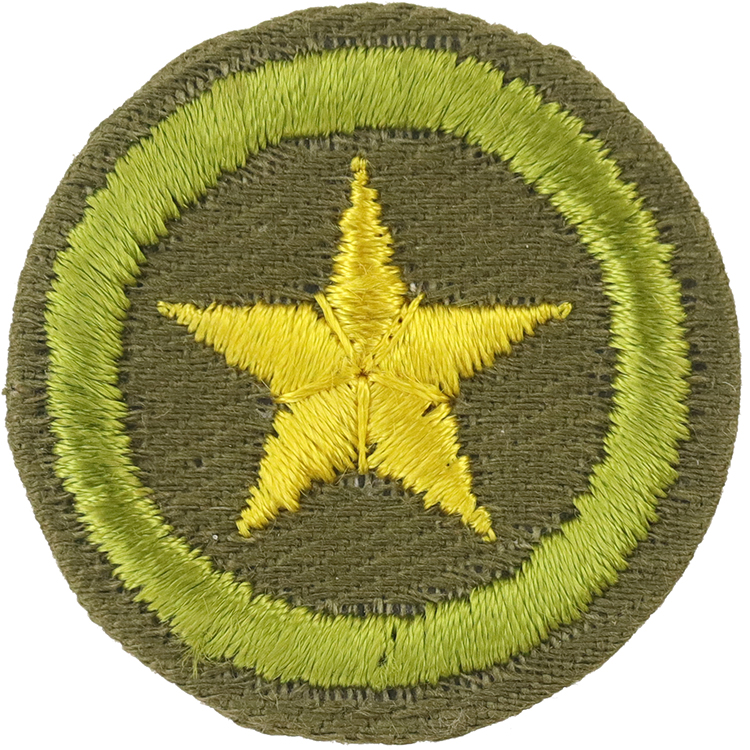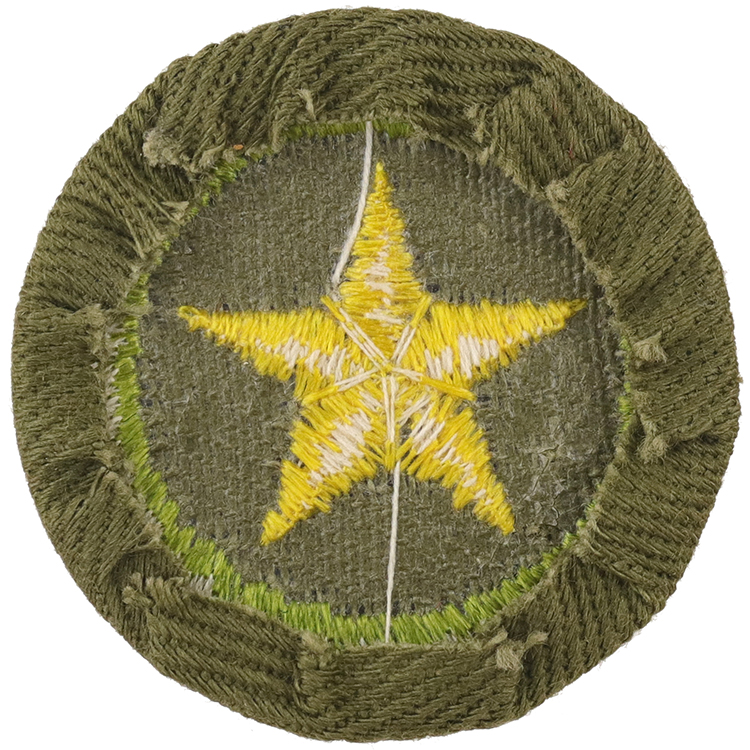
Fig. 1: Astron-E2-Front
- Cloth: Khaki right twill
- Embroidery: Cotton lock stitch

Fig. 2: Astron-E2-Reverse
- Back: Plain NO imprint with starch

Fig. 3: Astron-E2-mve1-front
- Minor variation: Wide light border

Fig. 4: Astron-E2-mve1-reverse
- Back: Plain NO imprint with starch
Item Name: Astronomy 1947 - 1958
Item ID: Astron-E2
Collector Rating: 1
Requirements December 1943 until June 1952
1. Identify in the sky (a) 10 conspicuous constellations, including at least 4 in the Zodiac; (b) at least 8 first-magnitude stars.
2. Chart the positions of Venus and Mars among the stars over a period of four or more weeks, and state the limiting dates of his observations.
3. Sketch the positions of the Big Dipper and its relation to the North Star and the horizon early some evening and again six hours later the same night. Record the date and hour of the making of each sketch.
4. Indicate in the sky the limits of the group of stars which, as seen from this latitude, never set. By his own observations determine whether the Big Dipper or Cassiopeia ever set.
5. Draw a diagram showing the relation of the Sun, Moon, and Earth at new Moon, first quarter, full Moon, and last quarter. Draw a diagram a diagram showing the relation of the Sun. Moon, and Earth at an eclipse of the Sun, and another for an eclipse of the moon.
6. Explain the principal cause or the tides. Draw a diagram showing the relation of the Sun, Moon, and Earth when we have the highest tides and the lowest tides.
7. Explain the principle difference between a reflecting and refracting telescope. Illustrate by simple diagrams.
Requirements June 1952 until February 1960
1. Identify in the sky: (a) ten conspicuous constellations, including at least four in the zodiac; (b) at least eight first-magnitude stars.
2. Chart the position of Venus, Mars, or Jupiter among the stars over a period of four or more weeks, or chart the Moon’s path through four constellations in the zodiac.
3. Sketch the position of the Big Dipper and its relation to the North Star and the horizon early some evening and again six hours later the same night. Record the date and hour of the making of each sketch.
4. Indicate in the sky the limits of the group of stars which, as seen from your latitude, never set. By your own observations determine whether the Big Dipper or Cassiopeia ever set.
5. Draw a diagram showing the relation of the Sun, Moon, and Earth at new Moon, first quarter, full Moon, and last quarter. Draw a diagram showing the relation of the Sun, Moon, and Earth at an eclipse of the Sun, and another for an eclipse of the Moon.
6. Explain the principal cause of the tides. Draw a diagram showing the relation of the Sun, Moon, and Earth when we have the highest tides and the lowest tides.
7. Explain the principal difference between a reflecting and refracting telescope. Illustrate by simple diagrams.




